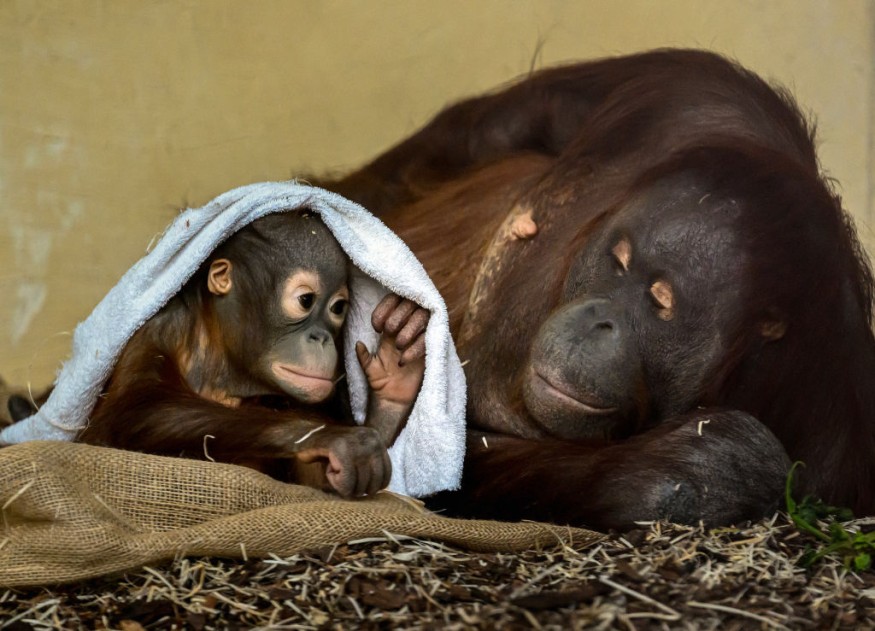
A wild animal has been observed purposefully tending to its wounds with medication when an orangutan was spotted using a herb that is known to relieve pain.
Apes Behavior
It has long been known that orangutans are very intelligent, in part because of their aptitude for using tools to gather seeds and forage for insects. But recent studies indicate that the primate may also be skilled at administering medicinal herbs.
A male Sumatran orangutan with a facial cut was observed by researchers in Indonesia frequently applying sap from a plant that has long been used in traditional medicine because it has anti-inflammatory and pain-relieving qualities.
The fact that the ape bandaged its wound with a net constructed from the plant's leaves raises the possibility that humans and apes shared a common ancestor at the time when medicinal wound care first evolved.
Animal species frequently self-medicate by consuming plant components, but there is no prior research on the use of a particular biologically active ingredient to cure wounds.
During routine inspections in the Suaq Balimbing area of Indonesia, researchers discovered that Rakus, a male orangutan, had a face wound that was most likely inflicted during a fight with another male nearby.
Akar Kuning (Fibraurea tinctoria) is a plant that the injured orangutan was observed tearing off leaves from a few days later. He chewed on the leaves and repeatedly applied the sap that resulted in his wound for many minutes. Finally, he used all of the chewed leaves to completely cover the wound.
Akar Kuning is commonly used in traditional medicine to treat illnesses like malaria because of its well-known pain-relieving qualities.
The orangutan's wound healed completely in five days and showed no signs of infection.
"The behavior of Rakus appeared to be intentional as he selectively treated his facial wound on his right flange and no other body part with the plant juice," Isabelle Laumer, one of the study's authors, said.
First Case Of Self-Medication
The researchers believe that the orangutan's use of a medical plant to treat wounds may have resulted from individual creativity.
They also claim that the orangutans there rarely consume the plant. But when consuming this plant, the animal could accidentally touch their wounds and apply the plant's liquid there instead.
The behavior reveals the existence of self-medication in the closest relatives of humans and is the first-ever account of active wound treatment using a biologically active chemical in a great ape species.
"In the chimpanzee case, they used insects, and unfortunately, it was never found out whether these insects really promote wound healing. Whereas in our case, the orangutan used the plant, and this plant has known medical properties," said Dr. Caroline Schuppli, senior author of the research based at the Max Planck Institute of Animal Behavior in Germany.
According to the team, the results shed light on the history of human wound care. Human wound care is first documented in a 2200 BC medical book that describes cleansing, plastering, and bandaging wounds with particular materials.
© 2025 NatureWorldNews.com All rights reserved. Do not reproduce without permission.





